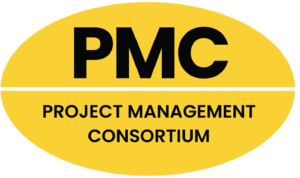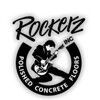The primary function of a well-built and well-designed roofing system is to prevent water from moving through it into the building below it. Yet, as the National Roofing Contractors Association (NRCA) has observed, an increasing number of “good roofs” installed on concrete decks have failed in recent years. Blistering, de-bonding, and substrate buckling have occurred with no reports of water leakage. Upon investigation, the roofing materials and substrates are found to be wet and deteriorated.
Why is this? One potential cause is trapped moisture . . . with numerous potential sources of trapped moisture in a structure. This paper will focus on the moisture source embedded within the concrete roof deck.
Why Does This Moisture Become Trapped?
It often starts with the schedule. In construction, time is money and faster completion means lower cost to the general contractor and owner. Many construction schedules include the installation of the roof on the critical path because the interior building components and finishes cannot be completed until the roof has been installed. Therefore, to keep the project on schedule, roofers are pressured to install the roof soon after the roof deck has been poured. Adding to the pressure are contracts written so that the general contractor receives a milestone payment once the roof has been installed and the building has been topped out.
Historically, roofers wait a minimum of 28 days after the roof deck is poured before starting to install a new roof. This is the concrete industry’s standard time for curing the concrete before testing and evaluating the concrete’s compressive strength. 28 days has no relation to the dryness of a concrete slab. Regardless, after 28 days the roofer may come under pressure from the general contractor to install the roof membrane. The concrete slab’s surface may pass the historic “hot asphalt” or the ASTM D4263 Standard “Plastic Sheet” test, but the apparently “dry” surface can be deceptive. Curing is not the same as drying, and significant amounts of water remain within a 28-day-old concrete deck. Depending on the ambient conditions, slab thickness, and mixture proportions, the interior of the slab will likely have a relative humidity (RH) well over 90% at 28 days.
Where Does the Water Come From?
Upon placing the concrete slab, the batch water goes to several uses. Portland cement reacts with water through the hydration process, creating the glue that holds concrete together. The remaining water held in capillary pores can be lost through evaporation, but evaporation is a slow, diffusion-based process. The diffusion rate of concrete is governed by the size and volume of capillary pores which, in turn, are controlled by the water/cement (w/cm) ratio. The total volume of water that will be lost is controlled by the degree of hydration, which is primarily related to curing and w/cm.
A 4-inch thick concrete slab releases about 1 quart of water for each square foot of surface area. If a roof membrane is installed before this water escapes the slab, it can become trapped and collect beneath the roof system. The water does not damage the concrete, but it can migrate into the roofing system – and that’s when problems begin to occur. For instance, moisture that moves into the roofing system can:
- Reduce thermal performance of the insulation
- Cause the insulation, cover board, adhesive, or fasteners to lose strength, making the roofing system susceptible to uplift or damage from wind, hail, or even foot traffic
- Lead to dimensional changes in the substrate causing buckling and eventually damaging the roof membrane
- Allow mold growth
A number of factors compound the problem. In buildings where a metal deck is installed, moisture cannot exit the slab through its bottom surface. Instead, the moisture is forced to exit the slab by moving upward. Eliminating one drying surface almost doubles the length of drying time of a concrete slab. The small slots cut in ventilated metal decking have little effect on reducing this drying time.
Ambient conditions also affect the drying rate of a concrete slab since it readily absorbs and retains moisture. Additional moisture may enter an unprotected roof slab from snow cover, rain, or dew. Even overcast days will slow the rate of drying.
A Modern-Day Problem
Before the introduction of today’s low volatile organic compound (VOC) roofing materials, historic roof systems didn’t experience as many of these moisture issues. Typically, they were installed onto concrete decks on a continuous layer of hot asphalt adhesive that bonded the insulation to the deck. This low permeable adhesive acted as a vapor retarder and limited the rate of moisture migrating from the concrete into the roofing assembly. As a result, historic roof systems were somewhat isolated from moisture coming from the concrete slab.
Many of today’s single ply roof membranes are not installed with a vapor retarder. Moisture is able to migrate from the concrete slab into the roof materials. Modern insulation boards are often faced with moisture-sensitive paper facers and adhered to substrates with moisture-sensitive adhesives. It is these moisture-sensitive paper facers and adhesives that are causing many of the problems.
Rene Dupuis of SRI recently presented a paper to the Chicago Roofing Consultants Association (CRCA) on the subject. A recap of some of his findings includes the following:
Due to air quality requirements, government regulations curtailed the use of solvent-based adhesives because they are high in VOCs. Consequently, manufacturers changed to water-based adhesives because they are lower in VOCs, have low odor, are easy to apply, and provide more coverage.
There can be several drawbacks to water-based bonding adhesives. One is that they may be moisture sensitive. Moisture and alkaline salts migrating into roof systems from concrete decks can trigger a negative reaction with some water-based adhesives. This reaction can cause the adhesives to revert to a liquid, or it may alter or delay the curing of some foam-based adhesives. Some adhesive manufacturers have recognized these problems and have begun reformulating their adhesives to address these drawbacks.
Negative reactions also occur when moisture-sensitive paper facers come into contact with moisture. This reaction typically results in decay, mold growth, and loss of cohesive strength. Moisture in the roof system may also cause gypsum and wood-fiber based cover boards to lose cohesive strength.
Dupuis noted in his conclusions that moisture from any source can compromise adhered roof systems with wind uplift when attached to paper insulation or gypsum board. He also noted that facer research clearly shows paper facers suffer loss of strength as moisture content increases.
Concrete Mixtures
Another part of the problem is the change in concrete mixes. For instance, concrete mixes made with fly ash or slag are more durable and may contain admixtures that reduce the water content. In addition, these concrete mixes can be less permeable which, in turn, slows the release of moisture from the concrete.
The increased use of lightweight structural concrete, with its pre-wetted aggregates, adds additional moisture to the mix. Increased moisture in the mix exacerbates the problem of trapped moisture beneath the roof membrane. Although lightweight concrete mix has its benefits, it also doubles the drying time of concrete compared to normal-weight structural concrete.
Understanding Concrete
Concrete is typically classified as normal-weight structural concrete, lightweight structural concrete, or lightweight insulating concrete.
Normal-weight structural concrete is most common. It has a density of about 150 pounds per cubic foot (pcf).
Lightweight structural concrete is similar to normal-weight structural concrete in terms of load-bearing capacity. It has a density ranging from 85 to 120 pcf.
Lightweight insulating concrete, used as an insulating, slope-to-drain deck topping, has a density ranging from 20 to 40 pcf.
Normal-weight structural concrete and lightweight structural concrete are produced by mixing large and small aggregates, Portland cement, water, and, in some cases, fly ash or chemical additives. Aggregates are inert granular materials such as sand, gravel, or crushed stone and account for 60 to 75 percent of the total volume of concrete.
Unlike aggregates, most chemical admixtures are supplied in ready-to-use liquid form. They are classed according to function of which there are four distinct classes. Chemical admixtures are added to the mix immediately before or during mixing and serve a number of purposes:
- Add entrained air to the concrete (microscopic air bubbles that primarily prevent freeze-thaw damage)
- Accelerate or retard the setting or strength gain
- Reduce the necessary water content (dispersants)
- Slow corrosion of embedded reinforcing steel
The main difference in the composition of normal-weight structural concrete and lightweight structural concrete is the type of coarse aggregate used. Normal-weight structural concrete contains aggregates such as natural stone or crushed gravel. These aggregates are dense and ordinarily absorb no more than 2 percent moisture by weight.
Lightweight structural concrete, on the other hand, uses porous aggregates such as expanded shale. Shale will absorb about 5 to 25 percent moisture by weight. Since it absorbs so much moisture, most lightweight mixes require the use of saturated aggregate to prevent the aggregate from absorbing all of the mix water and reducing the mix water available for hydration. Because the aggregate is saturated, lightweight structural concrete contains much more water than normal-weight structural concrete.
After placement, there is little to no difference in appearance between normal and lightweight structural concretes. It typically requires a trained petrographer or engineer using a microscope or a scale to make a positive identification between the two materials.
Concrete Moisture Problems
As noted, lightweight structural concrete contains substantially more moisture in the mix than normal-weight structural concrete. The National Roofing Contractors Association (NRCA) reports the following problems associated with the moisture present in lightweight structural concrete roof decks:
- Vapor from the concrete roof deck condenses in or beneath a roof system
- Deteriorates moisture-sensitive roofing materials causing reduced cohesive strength
- Affects adhesive curing and drying rates, and causes loss of bond strength due to adhesive “rewetting”
- Corrodes metal components, including fasteners
- Lowers effective R-value of most insulation products
- Supports microbial growth on organic-based materials, such as wood fiberboard, perlite board, and some insulation facer sheets
Addressing the Problem
The moisture issues we are seeing in the roofing industry are similar to what occurs in the flooring industry. That is, flooring often suffers detrimental effects from moisture vapor diffusing out of concrete slabs.
To combat the problem, the flooring industry developed test methods to measure the internal RH of concrete. Initially, the popular calcium chloride test was shown to give false readings. Because of its reliability, the preferred method is now in situ RH testing. Using data from in situ RH testing, many flooring manufacturers specify acceptable RH limits for the concrete at the time of flooring installation as a condition of their warranty.
Although the roofing industry has recently paid more serious attention to moisture issues in concrete roof decks, its typical methods for determining the suitability for installing a roof system have proven to be inadequate.
28-Day Method
For example, a common guideline for determining when to apply roofing materials is to wait a minimum of 28 days after pouring the concrete roof deck. The roofing industry accepts this 28-day period as the minimum length of time needed for the concrete to be cured before it is tested for design compression strength.
Unfortunately, many in the industry mistakenly equate this 28-day period with the time required for the concrete to be considered “dry.” This is false. There is no known correlation between this 28-day curing period and the concrete’s dryness. Of course, as stated above, pressure on the industry to meet construction schedules helps promote this thinking.
Although most concrete decks may look and feel dry after 28 days, there is substantial evidence that they are not sufficiently dry enough beneath the surface to accept a roof membrane.
Hot Asphalt Method
A second method involves dripping or mopping hot bitumen onto the concrete deck surface. If the concrete is too wet, the hot bitumen causes water on the concrete surface to bubble, turn to steam, and splatter. If the hot bitumen did not splatter, the concrete deck was believed to be sufficiently dry to accept a roof membrane.
Although the hot bitumen may indicate the presence of surface moisture, this method does not provide a way to know if half an inch or more below the surface the concrete is actually wet. The NRCA no longer accepts this method as reliable.
Plastic Sheet Method
A third method is standardized as ASTM D4263, “Standard Test Method for Indicating Moisture in Concrete by the Plastic Sheet Method.” This protocol calls for taping a small piece of transparent plastic or glass pane to the concrete deck surface for 24 hours. If, after 24 hours, there is condensation on the bottom of the plastic or glass, then the roof deck is considered too wet for the application of a roof membrane.
But the NRCA no longer considers this method reliable either. This method can result in false readings. One reason for inaccurate results is that it’s difficult to achieve an airtight seal at the test panel’s edges. Secondly, unless the temperatures on the top and bottom sides of the concrete deck are nearly the same, the resulting lack of a vapor pressure difference can give a false “dry” indication.
To illustrate, if the test is performed on a warm day, then no condensation may appear because the plastic will be warmer than the concrete slab. Even if the test is performed in the shade instead of the sun, similar results may occur.
In Situ Probe Method
Still another way for measuring the concrete deck’s level of moisture content is to use the method the flooring industry has found to be reliable – ASTM F2170, “Standard Test Method for Determining Relative Humidity in Concrete Floor Slabs Using in situ Probes.” This method calls for small holes to be drilled in the concrete slab, then inserting and sealing small moisture probes in the drilled openings for a minimum of 72 hours. Each probe reads the concrete’s internal temperature and RH.
While the NRCA considers this method to have some merit, it also realizes ASTM F2170 must overcome the following challenges before becoming a viable test method.
First, the roofing industry, unlike the flooring industry, has not yet “established any benchmarks or acceptable levels” for moisture in concrete. It’s still to be determined. Therefore, no one can say with any assurance at what RH reading a roof membrane can be reliably installed.
Second, no practical method has been established to get a reliable number even if an acceptable benchmark is established. The moisture probes used in the flooring industry are designed to work in an interior environment under a fixed temperature and a fixed moisture level. That’s not the case when the probes are used on a concrete roof deck. They are exposed to changes in temperature and RH, and changes in the weather. For instance, what happens if current technology moisture probes are installed in a roof slab and it rains? The test results would be skewed.
At the present, however, there is not acceptable value for concrete roof decks. To attain the 75 percent value accepted by the flooring industry, normal-weight structural concrete would take close to 90 days to dry under ideal, controlled laboratory conditions (no rewetting). Meanwhile, lightweight structural concrete would take about six months to reach the same 75 percent value.
Solutions
The roofing industry is looking at various ways to remedy or minimize the problems surrounding concrete roof deck moisture. Aside from ASTM F2170 and the promise that it may one day help determine a concrete slab’s acceptable level of dryness, let’s look at some other ways of solving these problems.
One of the most obvious solutions is to avoid using lightweight structural concrete. It holds significantly more water than normal-weight structural concrete and requires at least twice as long to sufficiently dry out.
Another thing to avoid is using a metal deck. Doing so will allow the concrete slab to dry to the bottom.
Another approach is to change the mix by adding additives and admixtures that change the water/cement ratio. This mix would contain less water and dry out faster, yet provide a good, high-strength concrete.
There’s also work being done on using different coatings to coat the roof deck. These coatings are designed to seal the moisture in and prevent it from causing problems with the moisture-sensitive materials. While this may sound promising, the cost of many of these coatings are relatively expensive compared to the overall roof system. So at the present time, this is not a good solution.
Still another approach is to use moisture vapor transmission calculations. Moisture migrates through roofing system components over time. The construction industry has been investigating moisture vapor flow for many years. Sophisticated computer programs have been developed to predict moisture vapor flow and are used by building envelope consultants. These programs have inherent limitations. They are typically one-dimensional analytic tools that focus on vapor diffusion. They typically do not account for bulk air or water leakage. So if the roof membrane and air barrier malfunctions, the results will be inaccurate. Another limitation is that hygrothermal analysis program results require knowing the maximum amount of moisture that roofing materials can safely tolerate and these levels have not been established by manufacturers.
Who Takes Responsibility?
When it comes to who is responsible for assuring a structural concrete deck’s suitability for installing roofing materials, project contract, specification, or manufacturers’ installation requirements often try to place the responsibility on roofing contractors.
The NRCA, however, says it is not the contractor’s responsibility and given current technology, it is beyond his controllability to assess properly. The association, pointing to all the many variables involved in this decision, such as concrete mix design, placement, curing, and drying, claims that roofing contractors either do not have this information or simply lack the knowledge to make an informed decision.
Normally, a roofing contractor can make a visual or tactile assessment of whether or not the concrete’s uppermost surface is dry, but he or she cannot accurately assess what level of moisture content lies within the concrete and its likely release.
What the NRCA Recommends
According to the NRCA, the decision to cover a newly placed concrete deck with a new roof system should be made by the building’s structural engineer, general contractor, concrete supplier, and concrete placement contractor. The reason they should have this responsibility is that each of them should have considerably more knowledge than the roofing contractor about the particular concrete’s curing and moisture release rates. If additional assistance would be helpful, the NRCA also recommends consulting the building’s roof system designer and roof system manufacturer.
The NRCA contends their position on this issue is similar to the flooring industry. That is, floor covering manufacturers of resilient tile and textile floor coverings and coatings typically require quantitative moisture testing be performed before floor covering installation on concrete. They use ASTM F2170 for this purpose.
In addition, the NRCA recommends that in the case of new construction, designers should not specify – and construction managers and general contractors not use – lightweight structural concrete for roof decks or as toppings for roof decks. It is NRCA’s opinion that the risks of moisture-related problems associated with lightweight structural concrete roof decks outweigh the benefits.
Should lightweight structural concrete be used, the NRCA recommends designers clearly state the concrete’s drying parameters, and that ASTM F2170 be used for this purpose. Until such time that pass-fail criteria be established for determining concrete’s internal humidity, NRCA suggests a maximum of 75 percent RH value be used. And, whenever organic-based materials are used for roof system components, such as wood fiberboard, perlite board, and some insulation facer sheets, then lower RH values may be required.
Conclusion
For the near term, it appears that the roofing industry will continue to face costly and troublesome problems with moisture and concrete decks. There are several reasons:
- Tight construction schedules forcing roofing contractors to install roofs before the underlying concrete roof decks are sufficiently dry.
- Some manufacturers have been slow to reformulate their water-based adhesives. Reintroduction of moisture from any source can compromise some water-based adhesives.
- Insulation manufacturers still use paper facers. Facer research clearly shows that paper facers suffer loss of strength as moisture content increases. They do not appear to be suitable for use in adhered systems where moisture is present.
- No acceptable test method to measure the moisture content or RH of concrete decks that are exposed to the weather. Although the flooring industry enjoys success with in situ probes for measuring RH within concrete floors, this test method works well only indoors where temperatures and humidity are consistent. Getting it to work well outdoors, where the weather is variable, has been a major challenge.
- Manufacturers are slow to publish maximum moisture content numbers for their products. Since maximum moisture contents will provide a limitation to the application of their materials, manufacturers are afraid that if they publish maximum required moisture value, competitors will publish slightly higher warrantable maximum moisture content, therefore giving them a significant sales advantage. The industry has not yet determined an acceptable moisture content for concrete decks that allows for the safe installation of an adhered roofing system.
- The lack of a vapor retarder within the system. When a vapor retarder is not used, it causes the roof membrane to function as a vapor retarder, trapping moisture within the roof system, and eventually degrading moisture-sensitive materials.
- The use of lightweight structural concrete which contains significantly more moisture than normal-weight structural concrete.
- More roof decks are being poured onto a steel pan, thereby eliminating internal drying. According to the Steel Deck Institute (SDI), drying is not improved even if vented steel decks are used.
It is quite clear the roofing contractors can only visually assess the dryness of the concrete’s top surface. They lack the knowledge and ability to accurately assess any remaining free moisture within concrete or its likely release.
Until the roofing industry finds and adopts an acceptable moisture test method or finds a system that can accommodate the release of moisture from the underlying structure, the project designer, the general contractor, the concrete contractor, and their suppliers should make the decision of when a concrete deck may be roofed – and not the roofing contractor. With concrete specifications and the project environment at their fingertips, including the heated interior and additional high-moisture interior components and other factors that could drive moisture out of the concrete, they are more knowledgeable of the potential water/moisture migration and potential vapor pressures than roofing contractors.
Once the design and management group believe the roof deck is sufficiently dry for it to be safe to install the roof assembly, then, and only then, should they authorize the roofing contractor to proceed with installation of the roof.
About the Author
David F. Cook is the Principal Architect for the Structural & Architectural Evaluation Group for the CTL in Skokie, Ill. He has more than 30 years of architectural experience in commercial and residential construction, project design, structural evaluation, and project management. Cook has led the inspection and evaluation of a wide range of structures from churches and parking garages to high rise towers and historic sites. Prior to joining CTLGroup, Cook served as the Superintendent of Facilities Management for the City of Evanston, Ill., where he managed capital facility improvements and operations for 40 civic buildings and facilities and directed technical professionals during the execution of several construction and repair projects. He has a degree in architecture from the University of Illinois at Chicago and a Masters of Project Management from Northwestern University.












 The 2024 virtual Men’s Round Table will be held Q4, 2024, date TBD.
The 2024 virtual Men’s Round Table will be held Q4, 2024, date TBD.













